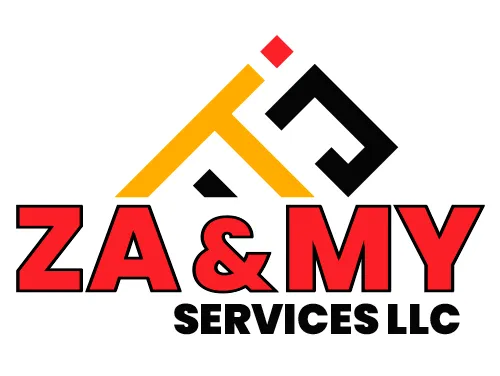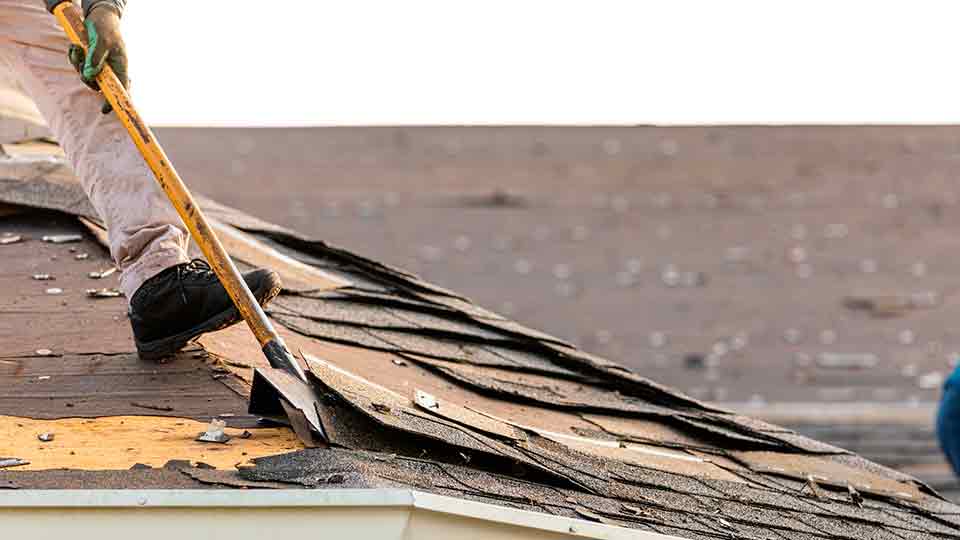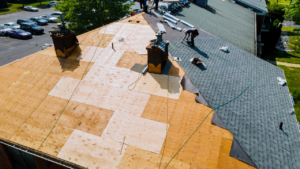Understanding the Importance of Roof Maintenance
A roof is more than just a shelter; it’s the first line of defense against the elements, ensuring the safety and comfort of those inside the home. Regular roof maintenance is critical in preserving the structural integrity of your home and avoiding costly repairs or replacements. However, many homeowners overlook the importance of routine inspections, leading to undetected issues that can escalate into major problems.
Why Regular Roof Inspections Matter
Routine inspections can identify minor issues before they become serious, extending the lifespan of your roof. A well-maintained roof can last decades, but neglecting it can lead to premature failure. By catching problems early, you not only save money but also prevent potential damage to the rest of your home.
How Often Should You Inspect Your Roof?
Inspecting your roof at least twice a year—once in the spring and once in the fall—is a good practice. This ensures that you can address any damage caused by winter storms or summer heat before it worsens. Additionally, after any major weather event, a quick inspection can prevent small problems from turning into large ones.
Seasonal Roof Inspections and What to Look For
During these inspections, look for common signs of damage, such as missing shingles, granule loss, or visible leaks. Even if you don’t notice obvious damage, subtle signs like minor discoloration or small cracks can indicate potential trouble.
The Hidden Dangers of Ignoring Roof Damage
Ignoring roof damage can lead to significant consequences, both structurally and financially. While it’s easy to push off repairs, thinking they’re not urgent, this mindset can result in expensive and extensive damage down the road.
The Costly Consequences of Delayed Roof Replacement
When you delay roof replacement, you risk not only more severe damage but also increased costs. As issues like leaks or shingle deterioration worsen, they can lead to water damage, mold growth, and structural weakening. In the long run, the cost of repairing this additional damage will far exceed the expense of replacing the roof when the need first arises.
Common Causes of Roof Deterioration
Several factors can contribute to the deterioration of your roof, ranging from natural wear and tear to poor installation. Understanding these causes can help you recognize when it’s time to take action.
Weather-Related Damage
Your roof is constantly exposed to the elements, including rain, wind, snow, and sunlight. Over time, these conditions can wear down the materials, leading to cracks, leaks, and other issues. Extreme weather events, such as hurricanes or hailstorms, can cause immediate and severe damage, necessitating quick repairs or replacement.
Poor Installation and Materials
The quality of your roof’s installation and materials plays a crucial role in its longevity. Poor workmanship or substandard materials can lead to premature failure, even if the roof appears fine initially. Choosing a reputable contractor and investing in high-quality materials are essential steps in ensuring your roof lasts as long as possible.
Lack of Maintenance
Neglecting regular maintenance is one of the most common reasons roofs fail prematurely. Without routine inspections and repairs, small issues can go unnoticed and escalate into significant problems. Regular cleaning, gutter maintenance, and prompt repair of any damage can significantly extend your roof’s lifespan.
Warning Signs That Your Roof Needs to be Replaced
Knowing when to replace your roof is crucial for maintaining the safety and integrity of your home. While some issues can be repaired, others are clear indications that a replacement is necessary.
1. Age of the Roof
The age of your roof is one of the most significant factors in determining whether it needs to be replaced. Most roofing materials have a specific lifespan, and once that time is up, the risk of failure increases significantly.
Understanding Roof Lifespans
Asphalt shingles, the most common roofing material, typically last between 20 to 30 years. Metal roofs can last 40 to 70 years, while slate, copper, and tile roofs can endure for more than 100 years. If your roof is approaching the end of its expected lifespan, it’s time to start considering replacement options.
When Age Alone Warrants Replacement
Even if your roof hasn’t shown obvious signs of damage, its age alone can warrant a replacement. Older roofs are more prone to leaks, structural issues, and other forms of deterioration. Don’t wait until problems become severe—proactively replacing an aging roof can prevent more extensive damage and save money in the long run.
Visible Signs of Roof Damage
Visible damage to your roof is often the most obvious indicator that it’s time for a replacement. Paying attention to these signs can help you act before the damage becomes too severe.
2. Missing or Damaged Shingles
Shingles are the first line of defense for your roof, protecting the underlying materials from the elements. Missing or damaged shingles are a clear indication that your roof may be compromised.
How Shingle Condition Reflects Roof Health
When shingles start to curl, crack, or go missing entirely, it exposes your roof to potential leaks and further damage. This can lead to water infiltrating the underlayment, causing rot and weakening the roof’s structure. If you notice widespread shingle damage, it’s time to consult a roofing professional about a replacement.
Spotting Water Damage and Leaks
Water damage is one of the most serious issues a roof can face. Once water starts to penetrate the roof’s protective layers, it can cause extensive damage, both to the roof itself and to the interior of your home.
3. Leaks in the Attic or Ceiling
One of the most telltale signs that your roof needs to be replaced is the presence of leaks. These can manifest as water stains on your ceiling or walls, or as actual drips and puddles in your attic.
Identifying the Source of Roof Leaks
Locating the exact source of a leak can be challenging, as water often travels along beams and surfaces before becoming visible inside your home. If you notice any signs of leaks, it’s essential to have a professional inspect your roof to determine whether a repair or full replacement is needed.
The Impact of Sagging Roof Lines
A sagging roof is a serious structural issue that requires immediate attention. It can indicate a range of problems, from simple wear and tear to significant damage to the roof’s foundation.
4. Sagging Roof Deck
When the roof deck begins to sag, it’s often a sign that the underlying structure is compromised. This could be due to water damage, excess weight on the roof, or the natural aging of the materials.
Structural Concerns with a Sagging Roof
A sagging roof can lead to more severe structural problems if not addressed promptly. It might indicate that the roof is no longer capable of supporting its own weight, putting your home at risk of collapse in extreme cases. If your roof is sagging, it’s crucial to have it inspected immediately to determine whether a repair is possible or if a full replacement is necessary.
The Problem with Mold, Moss, and Algae
Mold, moss, and algae growth on your roof may seem like minor issues, but they can cause significant damage over time. These organisms can deteriorate roofing materials and create a moist environment that encourages further decay.
5. Mold and Moss Growth on the Roof
While moss and algae might give your roof a rustic look, they’re actually signs of underlying issues. Mold, in particular, is a sign that moisture is trapped in your roof, which can lead to rot and the breakdown of roofing materials.
How Organic Growth Damages Your Roof
Moss tends to grow in the spaces between shingles, lifting them up and allowing water to seep underneath. This can lead to leaks and further degradation of the roof’s structure. Mold, on the other hand, can spread into your home’s interior, affecting air quality and potentially causing health issues. If you notice significant mold or moss growth, it’s time to consider a roof replacement.
Shingle Granules and Roof Health
The granules on asphalt shingles serve as a protective layer, shielding your roof from the sun’s ultraviolet rays and adding an extra layer of weather resistance. However, when these granules start to shed, it’s a sign that your roof may be nearing the end of its life.
6. Excessive Granules in the Gutters
Finding large amounts of granules in your gutters is a clear indication that your shingles are deteriorating. Over time, the loss of granules can expose the asphalt layer of the shingles, leading to faster wear and tear.
What Granule Loss Tells You About Roof Condition
Granule loss is a natural part of the aging process for asphalt shingles, but when it becomes excessive, it indicates that the shingles are no longer providing adequate protection. If you notice a significant amount of granules in your gutters or downspouts, it’s time to evaluate whether a roof replacement is necessary.
The Role of Flashing in Roof Integrity
Flashing is a critical component of your roof, designed to direct water away from vulnerable areas like chimneys, vents, and valleys. Damaged or rusted flashing can lead to serious water damage if not addressed promptly.
7. Damaged or Rusted Flashing
Flashing is typically made from metal, and over time, it can corrode or crack, especially if it was not installed correctly. Damaged flashing can allow water to seep into the roof’s underlayment, leading to leaks and structural damage.
Why Flashing is Critical to Preventing Roof Leaks
Since flashing is often located at the points where water is most likely to collect, any damage to it can result in significant water infiltration. Regularly inspecting and maintaining your roof’s flashing is essential to preventing leaks and prolonging the life of your roof.
The Risk of Roof Valleys and Vents
Roof valleys and vents are particularly vulnerable to damage because they handle a significant amount of water flow. Any compromise in these areas can lead to serious issues that may require a roof replacement.
8. Compromised Roof Valleys and Vents
Roof valleys are the areas where two sloping sections of your roof meet, and they handle a large volume of water runoff. Vents, on the other hand, are crucial for proper attic ventilation. Damage to these areas can result in leaks, water damage, and even mold growth.
How Valleys and Vents are Vulnerable to Damage
The constant flow of water through roof valleys makes them susceptible to erosion, especially if the roofing materials are aging or damaged. Vents can also become clogged or damaged over time, reducing their effectiveness and leading to increased moisture in the attic. If you notice issues with your roof’s valleys or vents, it’s a good indication that a replacement may be necessary.
The Consequences of Rotting Roof Components
Rotting components in your roof are a serious concern, as they can compromise the entire structure. This is often a result of prolonged moisture exposure, which can weaken the roof’s materials and lead to failure.
9. Rotting Underlayment and Roof Deck
The underlayment and roof deck are critical components that support the shingles and protect your home from water damage. When these elements start to rot, it’s a clear sign that your roof is no longer structurally sound.
Signs Your Roof’s Structure is Failing
Rot can spread quickly, weakening the roof’s ability to support its own weight and putting your home at risk of leaks, mold growth, and even collapse. If you discover rotting wood or underlayment during an inspection, it’s essential to address the issue immediately, often by replacing the roof entirely.
Interior Indicators of Roof Failure
While exterior signs of roof damage are often the most obvious, interior signs can also indicate that your roof needs to be replaced. Paying attention to these signs can help you catch problems before they become severe.
10. Stains on Walls or Ceilings
Water stains on your walls or ceilings are often a sign that your roof is leaking. These stains can be caused by water seeping through the roof’s protective layers and into your home.
When Interior Damage Signals Roof Replacement
If you notice water stains, mold, or peeling paint on your walls or ceilings, it’s likely that your roof is compromised. These signs indicate that water is entering your home, and if left unaddressed, they can lead to significant damage and expensive repairs. In many cases, the only solution is to replace the roof.
The Financial Implications of Roof Replacement
Replacing your roof is a significant investment, but it’s one that can save you money in the long run. By addressing roof issues before they lead to more extensive damage, you can avoid costly repairs and ensure the safety of your home.
Why Replacing a Roof Can Save You Money in the Long Run
While the upfront cost of a roof replacement can be daunting, it’s important to consider the long-term benefits. A new roof can increase your home’s value, improve energy efficiency, and prevent expensive repairs that result from neglecting roof damage. In many cases, investing in a roof replacement is more cost-effective than continuously repairing an aging or damaged roof.
Choosing the Right Roofing Material
When it’s time to replace your roof, selecting the right material is crucial. The material you choose will impact the longevity, durability, and overall performance of your new roof.
Comparing Roofing Materials for Durability and Cost
There are several roofing materials to choose from, each with its own advantages and disadvantages. Asphalt shingles are the most common due to their affordability and ease of installation, but they have a shorter lifespan compared to materials like metal, tile, or slate. Consider factors like your budget, the climate in your area, and the architectural style of your home when selecting a roofing material.
Finding a Reliable Roofing Contractor
A successful roof replacement starts with choosing the right contractor. Working with a reputable and experienced roofer ensures that your new roof is installed correctly and will last for years to come.
How to Vet Roofing Professionals for Quality Work
Before hiring a roofing contractor, do your research. Look for contractors with positive reviews, proper licensing, and a solid warranty on their work. Don’t be afraid to ask for references or to visit previous job sites to see the quality of their work firsthand. A reliable contractor will be transparent about costs, timelines, and the materials they use.
How to Extend the Life of Your New Roof
Once your new roof is installed, proper maintenance is key to maximizing its lifespan. By following best practices, you can ensure that your roof remains in good condition for years to come.
Best Practices for Roof Maintenance and Longevity
Regular inspections, cleaning, and prompt repairs are essential to extending the life of your roof. Keep gutters clear of debris, trim overhanging branches, and address any issues as soon as they arise. By staying proactive, you can prevent small problems from escalating into larger, more costly ones.
The Benefits of Regular Roof Inspections
Routine roof inspections are crucial for catching problems early and ensuring the longevity of your roof. By making inspections a regular part of your home maintenance routine, you can protect your investment and avoid unexpected expenses.
Protecting Your Investment Through Routine Checks
Regular inspections can identify potential issues before they become serious, allowing you to make necessary repairs and avoid costly replacements. By staying on top of maintenance, you can ensure that your roof remains in good condition and continues to protect your home for years to come.

Frequently Asked Questions
What are the most common signs that my roof needs to be replaced?
The most common signs include missing or damaged shingles, leaks, sagging roof lines, excessive granule loss, and stains on interior walls or ceilings. If you notice any of these, it’s time to consider a roof replacement.
How often should I have my roof inspected?
It’s recommended to inspect your roof twice a year, in the spring and fall, as well as after any major weather event. Regular inspections can catch minor issues before they become serious problems.
Can I replace my roof myself, or should I hire a professional?
While some homeowners may attempt a DIY roof replacement, it’s generally advisable to hire a professional. Roofing is complex and dangerous work that requires specialized skills and equipment. A professional contractor will ensure the job is done safely and correctly.
How long does a roof replacement typically take?
The duration of a roof replacement depends on the size and complexity of the roof, as well as the weather conditions. On average, a roof replacement can take anywhere from a few days to a week.
What is the best roofing material for my home?
The best roofing material depends on your budget, climate, and personal preferences. Asphalt shingles are the most common choice, but metal, tile, and slate are also popular for their durability and longevity.
How can I extend the life of my roof?
Regular maintenance is key to extending the life of your roof. Keep gutters clean, inspect your roof regularly, and address any issues promptly. Additionally, ensure that your attic is properly ventilated to prevent moisture buildup.
Conclusion
Your roof is one of the most critical components of your home, providing protection from the elements and ensuring your safety and comfort. Recognizing the warning signs that your roof needs to be replaced can save you from costly repairs and prevent damage to your home’s structure. By staying proactive with regular inspections and maintenance, you can extend the life of your roof and protect your investment for years to come.






